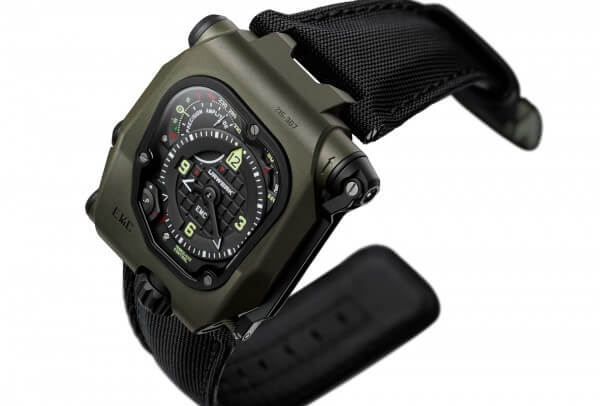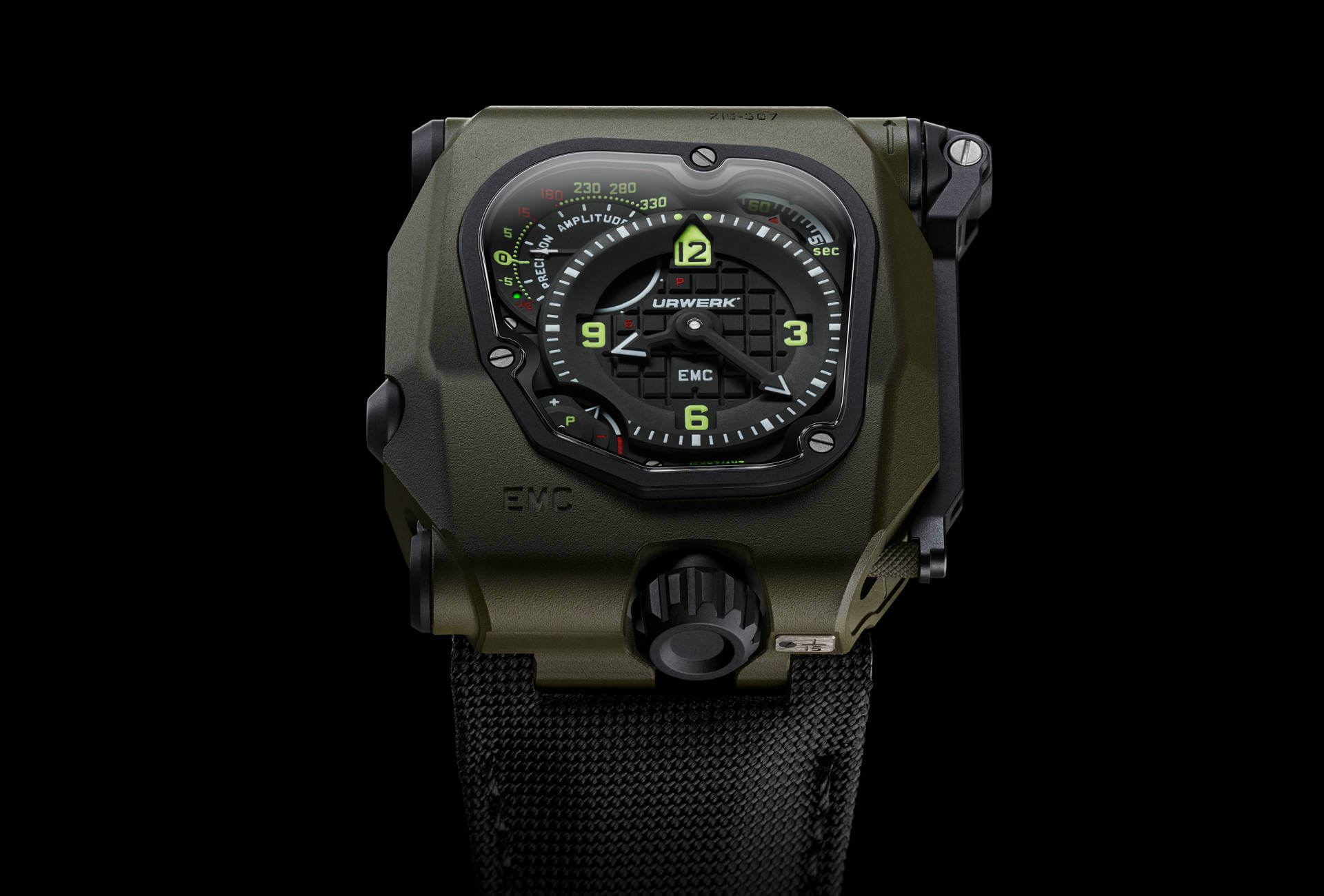Time: it’s by far the most valuable resource we have, so it’s worth measuring accurately. But no matter how well made or how well-regulated a wristwatch is, the unique activities and environments of individual owners can detrimentally affect chronometric performance. The new EMC enables its wearer to both monitor the health (amplitude) of the watch and its precision as worn on the wrist. Accuracy can then be easily adjusted for each owner’s lifestyle. Interactivity is at the heart of the EMC concept and is the real added value of the precision watch.
EMC “Time Hunter” is a fully 100% mechanical watch with electronically enhanced indications. It launches in two limited editions of 15 pieces each: one in natural titanium/steel and one with a military green ceramic-coated titanium/steel case.

Even by night
EMC “Time Hunter” features a highly legible time display with central hours and minutes indicated with high-contrast black hands enhanced with bright white Super-LumiNova. A rotating disk displaying seconds at 1 o’clock is visually balanced by the power reserve indicator at its antipode at 7 o’clock. The Super-LumiNova also ensures high legibility at night as it glows in blue and white.
The dial in the top left corner at 10 o’clock displays the two EMC electronic indications: timekeeping precision to +/- 15 seconds per day and the amplitude of the balance. Turning EMC over reveals the fully in-house movement with integrated circuit board (the EMC ‘brain’), the top of one of the two mainspring barrels near the crown, and the top of the balance wheel and optical sensor on the winding handle side.
What benefit does it offer?
When a watch is regulated (its precision tested and adjusted) by the watchmaker before it is sold, it is usually placed on a continually rotating arm in a fairly temperature-stable room. The rotating arm ensures that the watch spends fairly equal time all positions. But the timing of a mechanical watch changes slightly in each position as well as with changes in temperature. So in the real world of a watch on the wrist, how long it spends in each position (on average) will depend on the wearer’s activities: work, leisure, and how long each day it is actually worn. Two different people wearing the same watch for a week will find that its accuracy differs because the watch will have experienced different positions in different activities over the week.
EMC enables the wearer to note how many seconds the watch gains or loses in a week (or month), to adjust the precision, and then test that precision using the EMC function to confirm that the adjustment is correct. This concept of interactivity allows EMC to be as precise as possible for a specific wearer’s lifestyle and even to evolve with any changes.












